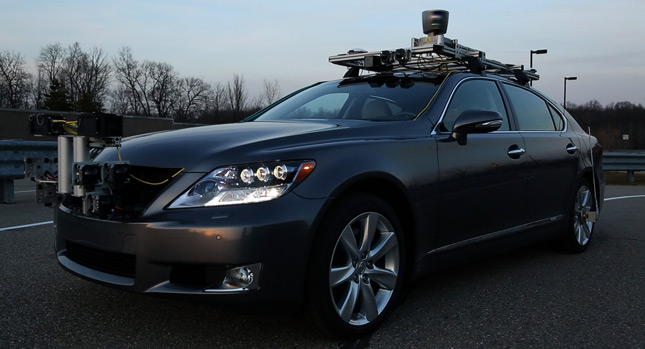Autonomous vehicle systems are one of the technologies that are being developed not only by automakers such as Audi, but by companies like Google, as well.
Toyota and its luxury division, Lexus, are of a different mindset; namely, that the aim to reduce and if possible, eliminate traffic accidents, injuries and fatalities can be achieved not necessarily by self-driving vehicles but by active-safety features.
At this year’s Consumer Electronics Show (CES) that’s taking place in Las Vegas, Lexus made its first appearance with a modified LS Hybrid that gave us a glimpse of its driver-assist technologies.
“It’s probably fair to say that for most people the term ‘autonomous’ is synonymous with driverless. At Lexus, that’s only part of the story”, said Lexus Vice President Mark Templin.
“We believe that the driver must be fully engaged in the operation of the vehicle at all times. Our vision is not necessarily a car that drives itself but rather a car equipped with an intelligent, always attentive co-pilot whose skills contribute to safer driving”, he added.
The Safety Research Vehicle, as the LS test platform is named, features an array of sensors and automated systems that monitor process and respond to the car’s surroundings. These systems were all, except one, developed by the Toyota Research Institute, North America (TRINA) in Ann Arbor, Michigan, and are the following:
– A 360-degree LIDAR laser on the roof of the vehicle detects objects around the car up to about 70 meters.
– Three high definition color cameras detect objects about 150 meters away, including traffic light detection using the front camera and approaching vehicles using the side cameras.
– Radars on the front and sides of the vehicle measure the location and speed of objects to create a comprehensive field of vision at intersections.
– A distance measurement indicator located on a rear wheel measures travel distance and speed of the vehicle.
– An inertial measurements unit on the roof measures acceleration and angle changes to determine vehicle behavior.
– GPS antennas on the roof estimate angle and orientation even before the vehicle is in motion.
Templin said that these safety features won’t make it into production Lexus vehicles very soon.
“We can’t speculate today on how or when such a car might be available in the marketplace, but our guess is not in the immediate future”, he said, adding, “That’s how it should be. We must combine the judgment of humans with the precision of machines and that takes time.”
You can scroll down and view the experimental Lexus LS and its systems in the videos right after the break.
By Andrew Tsaousis
PHOTO GALLERY








